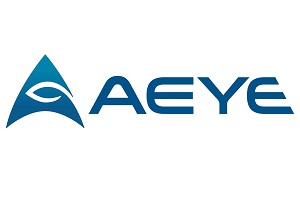AEye introduces adaptive lidar simulation suite on NVIDIA DRIVE sim

AEye, Inc., a global specialist in adaptive, high-performance lidar solutions, announced that Continental’s HRL131 Long Range Lidar, based on AEye’s patented architecture, is now available for testing and development on the NVIDIA DRIVE Sim platform. As NVIDIA announced today, Continental and AEye, will utilise the NVIDIA DRIVE Sim platform to enable AV and ADAS customers to rapidly simulate a fully adaptive lidar system in a variety of autonomous driving edge cases and environments. This saves OEMs time during development and testing, accelerating time-to-market for commercial deployment.
“The software-defined nature of the HRL131 means it is situationally aware, with the ability to adapt its scan pattern depending on the driving scenario to maximise safety,” says Jordan Greene, GM of Automotive at AEye. “It’s critical that manufacturers be able to test and validate these performance modes and the product’s performance in diverse situations, which NVIDIA DRIVE Sim will uniquely enable.”
The adaptive nature of Continental’s HRL131 Long Range Lidar is capable of deploying multiple scan patterns, including different fields of view (FOV), for disparate driving conditions and use cases. By integrating with NVIDIA DRIVE Sim, developers gain the ability to simulate the performance of different scan patterns in order to define and optimise each, and further refine the performance of the HRL131 to match their specific requirements.
This is especially important for high-speed highway driving, where even a small object can make a big impact. NVIDIA DRIVE Sim allows the recreation of obstacles in many shapes and sizes, with accurate physical based rendering, in complex highway environments. With a digital twin of the HRL131, and various environments and differing conditions of its usage in NVIDIA DRIVE Sim, OEMs and AV developers can determine which performance modes are more suitable for the chosen application based on solving for complex edge cases. Once identified and tuned, performance modes can be swapped on-the-fly using external cues such as speed, location or vehicle pitch.
“With the scalability and accuracy of NVIDIA DRIVE Sim, we’re able to validate our long-range lidar technology efficiently,” says Gunnar Juergens, head of product line LiDAR at Continental. It’s a robust tool for the industry to train, test and validate safe self-driving solutions.”
Continental developed the HRL131 in partnership with AEye, who licensed its 4Sight Intelligent Sensing Platform, reference architecture, and software to Continental to provide the basis for the product. The long range lidar offers maximum leverage for passenger vehicle applications, because it combines a high dynamic spatial resolution with long range detection. With the HRL 131, vehicles can be detected at more than 300 metres, and pedestrians at more than 200 meters. Continental is integrating the long range lidar technology into its full sensor stack solution to create the first full stack automotive-grade system for Level 2+ up to Level 4 automated and autonomous driving applications.
Comment on this article below or via Twitter @IoTGN
